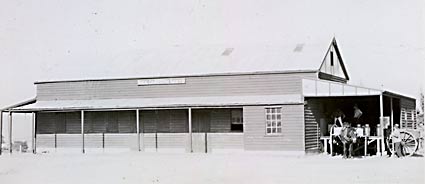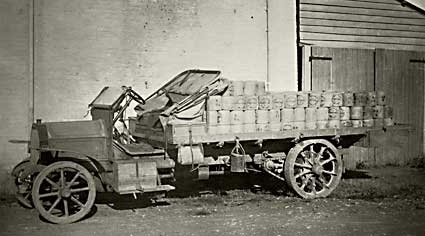

Enquiries
(02) 4846 1999
0407 292 181
info@braidwoodmade.com.au
| About Reidsdale |
|
||||
Sitting high on a ridge between the Araluen Valley and the coastal escarpment, Reidsdale is an area of significant natural beauty. Yet it was the glimmer of gold that enticed the Irish to the district. A number of Irish diggers had significant finds in the Jembaicumbene, Araluen and Bells Creek fields, all within a stone’s throw of Reidsdale. They were quick to realise the potential in the fertile ridge that shadowed the tented cities of fortune and one by one brought a stake in the land. A unique micro climate dominated by late afternoon cool damp air, known locally as the ‘Monga Mist’, allowed market gardening and dairying to thrive amongst the family units. Around 1912 a number of traditional family dairies merged to form the Reidsdale Cheese Making Cooperative under the tutorship of John Hyndes. In 1927 the ‘Reidsdale Rural Cooperative Society’, was formed and a new state of the art cheese factory constructed on the present site. |
Dairying in Reidsdale. The district’s earliest settlers looked for an agrarian lifestyle modeled on their European backgrounds. “Man to the plough, wife to the cow”, was often the way it was in Reidsdale. It was the women who milked the cows and churned the milk to make cream and butter and make cheese. Each farm had its own cottage economy selling a little at market but more importantly supplying the whole family with good healthy produce year round.
With the gold strikes in nearby Jembaicumbene, Bells Creek, Majors Creek and Araluen came people - lots of them! The diggers needed feeding and Reidsdale with its rich soils and above average rainfall became the centre of dairying and growing. It was mostly the Irish, having made some money on the gold fields, who settled down to farm and the area, which became known as ‘Irish Corner’. Although the scale of milk production increased it continued to operate on a cottage industry level. The invention of the cream separator towards the end of the 19th century revolutionized the dairy industry. It enabled centralized butter and cheese production and helped to produce a more consistent product. Butter and cheese factories began to appear around existing dairying areas. In 1912 John Hyndes came to Reidsdale, fresh from completing a cheese making course at Hawkesbury Agricultural Collage, he established the distrct's first centralized cheese factory at Reidsdale. Hynes’s factory was condemned by the Department of agriculture in 1927, Hyndes himself moving to a new stone built factory at Farringdon. He was later to play a part in the emergence of the cheese industry in Yass and King Island. With the demise of the Hyndes factory the Reidsdale Dairies united as The Reidsdale Rural Cooperative Society and together financed the construction of a new state of the art cheese factory at the present site. It cost around £1200, a considerable investment for the day. The ‘new’, cheese factory opened towards the end of 1927 with Tim Kennedy (Sec), Tom Allen, Marcus Lyons, Phil Flanagan, Tom Arkins, William Mahar, Phil Catlin, Robert Scarf, Billy Maher, Jane Hickey, Feeny Bros, Dan Kennedy, and Mick McCarthy as the first shareholders and suppliers. The cheese makers were Harold and Marcus Mahar. The factory operated successfully for 30 years and in 1930 was visited by Mr McInnes, director of the dairy industry of NSW who declared, “…no better cheese was produced anywhere in Australia”.
At its peak the shareholders were supplying over 900 gallons of milk daily. Reidsdale cheddar was transported to the railheads by Nomchongs Carriers then distributed State wide by P.D.S (Producers Distributing Society). Most of the cheese ended up in Sydney, Cooma, and Canberra, and was well sort after by Braidwood locals. By the late 1940s the number of suppliers had dropped to six, comprising of Marcus Lyons, Maurice Maher, Billy Maher, Mick & Jean Allen, Jim Hickey, Marcus Maher. Harold Maher remained the cheese maker. In 1957 the Co Op finally wound up. The pastures of the south coast were richer than the tablelands and produced higher yields of inferior cheese. As fuel prices dropped, the cheaper cheese flooded the market driving prices down. This was the plight of many rural food producers in the post World War II period. As a result we find many of our food shops stocked with consistent generic produce that pales in comparison to that enjoyed by our forbearers. Could today’s rising fuel prices be the catalyst to a healthier future based around locally grown and produced goods? (Thanks to Mick Allen, who supplied much of the information for this article.) |
||||
© Sully Consultants Pty Ltd
The Old Cheese Factory, 92 Sawyers Ridge Road, Reidsdale, NSW 2622.


